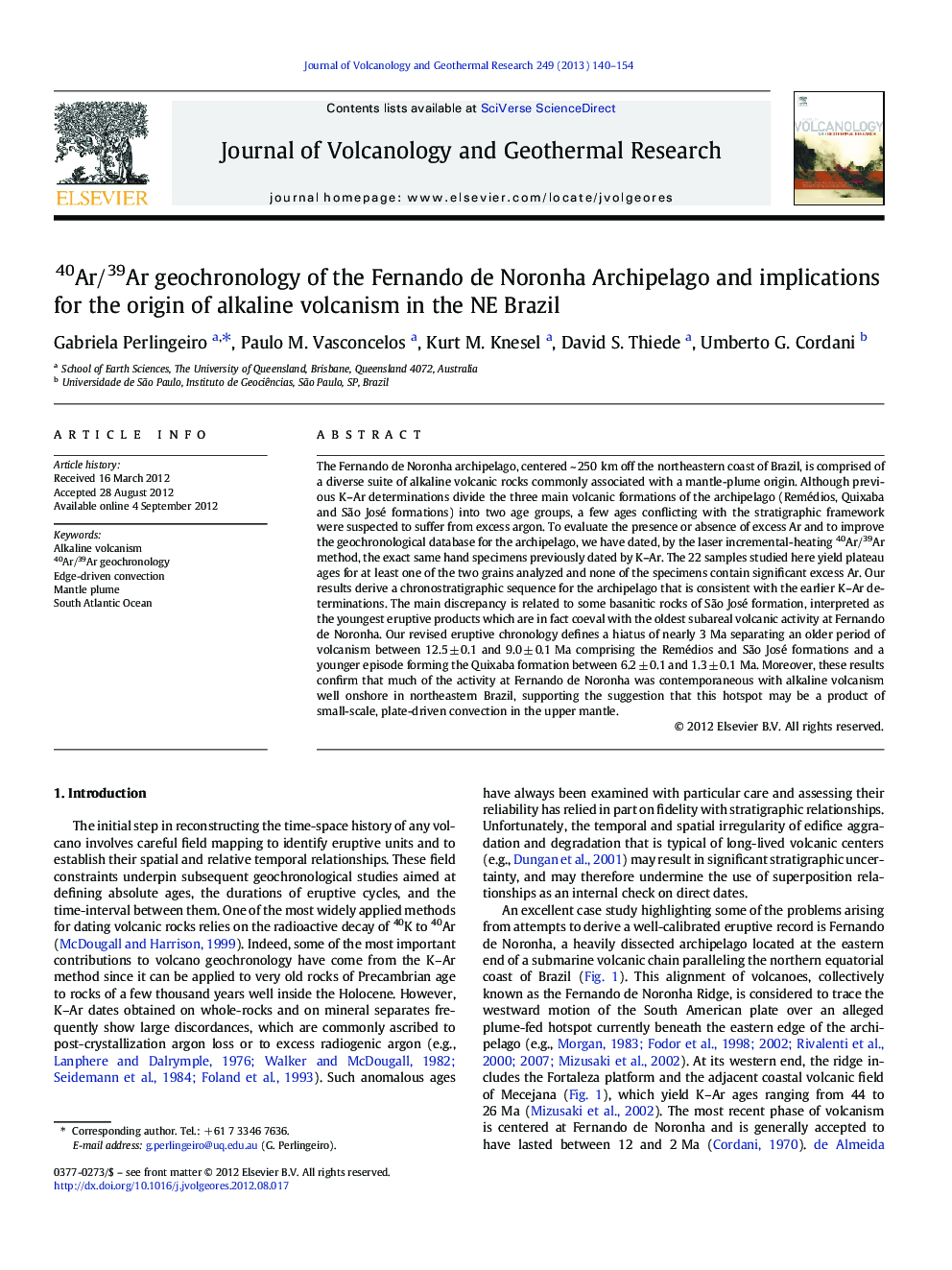| کد مقاله | کد نشریه | سال انتشار | مقاله انگلیسی | نسخه تمام متن |
|---|---|---|---|---|
| 4713588 | 1638372 | 2013 | 15 صفحه PDF | دانلود رایگان |

The Fernando de Noronha archipelago, centered ~ 250 km off the northeastern coast of Brazil, is comprised of a diverse suite of alkaline volcanic rocks commonly associated with a mantle-plume origin. Although previous K–Ar determinations divide the three main volcanic formations of the archipelago (Remédios, Quixaba and São José formations) into two age groups, a few ages conflicting with the stratigraphic framework were suspected to suffer from excess argon. To evaluate the presence or absence of excess Ar and to improve the geochronological database for the archipelago, we have dated, by the laser incremental-heating 40Ar/39Ar method, the exact same hand specimens previously dated by K–Ar. The 22 samples studied here yield plateau ages for at least one of the two grains analyzed and none of the specimens contain significant excess Ar. Our results derive a chronostratigraphic sequence for the archipelago that is consistent with the earlier K–Ar determinations. The main discrepancy is related to some basanitic rocks of São José formation, interpreted as the youngest eruptive products which are in fact coeval with the oldest subareal volcanic activity at Fernando de Noronha. Our revised eruptive chronology defines a hiatus of nearly 3 Ma separating an older period of volcanism between 12.5 ± 0.1 and 9.0 ± 0.1 Ma comprising the Remédios and São José formations and a younger episode forming the Quixaba formation between 6.2 ± 0.1 and 1.3 ± 0.1 Ma. Moreover, these results confirm that much of the activity at Fernando de Noronha was contemporaneous with alkaline volcanism well onshore in northeastern Brazil, supporting the suggestion that this hotspot may be a product of small-scale, plate-driven convection in the upper mantle.
► Our 40Ar/39Ar ages determine the correct eruptive chronology of the Fernando de Noronha archipelago.
► We provide new age ranges for the Remédios, São José and Quixaba formations.
► NE Brazil off- and on-shore volcanic ages show no evidence for the Fernando plume.
Journal: Journal of Volcanology and Geothermal Research - Volume 249, 1 January 2013, Pages 140–154